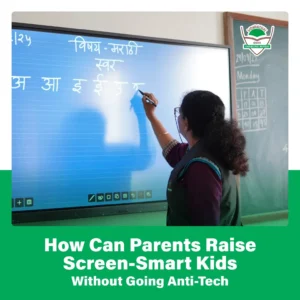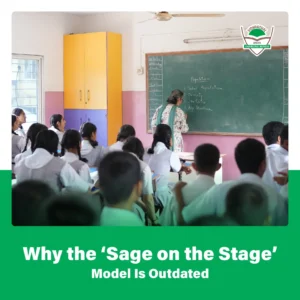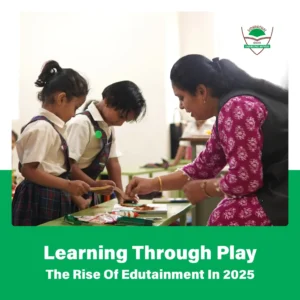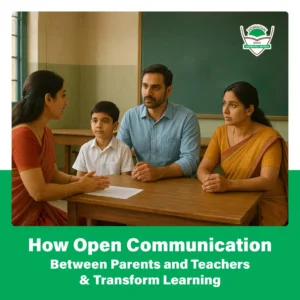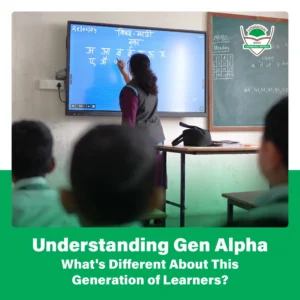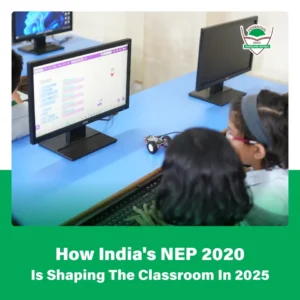The question is no longer “Will Artificial Intelligence enter classrooms?”, but “How should we responsibly integrate it?” With tools like ChatGPT, Google Gemini, and adaptive learning platforms rapidly becoming part of students’ digital lives, schools around the world—and especially in India—are being called to make critical decisions.
At Vidyanchal High School, which emphasizes holistic education, the debate around AI in classrooms is more than a tech conversation. It’s about ethics, purpose, and future readiness.
What Is ChatGPT, and Why Is It in the Spotlight?
ChatGPT is a language-based AI tool developed by OpenAI, capable of understanding and generating human-like text. From solving math problems to generating essays or clarifying concepts, it functions as a dynamic assistant. In 2024, over 60% of students in urban Indian schools reported experimenting with AI chatbots for schoolwork, according to a survey by EdTech India.
That number is only expected to grow.
The Promise of AI in the Classroom
1. Personalized Learning
AI tools like ChatGPT can adjust explanations based on the learner’s pace and level of understanding, making it easier for children with varying abilities to grasp difficult concepts. For students who learn better with repetition or alternative phrasing, ChatGPT can act as an always-available tutor.
“One-size-fits-all no longer works in the classroom,” says educationist and NEP advisor Anuradha Joshi. “AI allows for real-time customization.”
2. Language and Writing Support
Whether it’s improving vocabulary, summarizing a Marathi story, or understanding English grammar nuances, ChatGPT can assist without judgment. This is particularly useful for bilingual Indian learners who may feel underconfident in classroom settings.
3. Efficient Research and Brainstorming
AI tools are excellent for helping students gather ideas, explore angles for projects, or even simulate classroom debates by presenting arguments from multiple viewpoints. Instead of replacing creativity, AI can stimulate it—when guided correctly.
4. Faster Feedback Loops
In schools with growing class sizes, AI can help teachers by pre-screening written assignments, identifying grammar issues, or suggesting improvements. This enables educators to focus more on conceptual understanding and one-on-one mentorship, a core philosophy at VHS.
The Risks of Unchecked Use
Despite these positives, Vidyanchal believes that unregulated or unguided use of AI can harm rather than help.
1. Over-reliance and Reduced Thinking Skills
If students start turning to AI for every answer or assignment, it could impact critical thinking. For example, asking ChatGPT to write a paragraph on “Unity in Diversity” might give a perfect summary—but not necessarily personal reflection.
2. Misinformation and Inaccuracy
AI tools occasionally provide “hallucinated” answers—statements that sound factual but are not. Without media literacy, students may absorb incorrect or biased content.
3. Loss of Original Voice
Excessive use of AI for writing can flatten a student’s authentic style. In a school like Vidyanchal, where expression through art, writing, and debate is highly valued, this can dilute the purpose of education.
4. Data Privacy Concerns
Most AI tools collect user inputs to improve performance. Schools must be cautious about how student data is handled and ensure digital safety norms are taught alongside AI usage.
What NEP 2020 Says About AI
India’s National Education Policy (NEP) 2020 recognizes the role of technology in democratizing education. It calls for integrating tools like AI, coding, and data literacy at various stages of learning. Importantly, NEP also emphasizes “ethical use” and “critical engagement”—which aligns with how VHS approaches emerging technologies.
NEP 2020 states:
“Students will be taught not just how to use technology, but how to use it responsibly.”
How Vidyanchal High School Is Navigating This Shift
Rather than banning or blindly embracing AI, Vidyanchal High School believes in a balanced approach—one that educates before it integrates.
1. AI Literacy Workshops
This year, VHS introduced AI Orientation Sessions for students in Grades 6 and up. These workshops explain what AI is, how it can be used constructively, and how to cross-check its outputs.
2. Teacher Training on AI Tools
Educators are being trained not just to use AI, but to teach students how to question AI. This aligns with the school’s ongoing commitment to innovative pedagogy, seen in its implementation of NEP-based assessments and interdisciplinary projects.
3. Ethics-Focused Curriculum
AI prompts are being introduced into moral science and computer classes. Example:
“What would you do if ChatGPT gave you a wrong answer in an exam?”—leading to discussions on integrity.
4. Parent Communication
Parents are involved in AI literacy too, with resource kits and open discussions at PTMs to ensure students use AI responsibly at home. This is in line with VHS’s consistent effort to involve families in education, as explored in the school’s earlier blog on open parent-teacher communication.
What Indian Educators and Experts Are Saying
A 2024 report by Central Square Foundation found that 74% of Indian teachers see potential in AI tools—but only 28% feel confident guiding students in their use.
This gap in confidence is where schools like Vidyanchal are stepping up. Rather than waiting for curriculum changes, VHS is setting its own internal frameworks for AI use, responsibility, and balance.
Looking Ahead: Should Students Use ChatGPT in Class?
The answer isn’t binary.
✔ Yes, if they’re using it to clarify concepts, generate creative ideas, or learn languages—under guidance.
✘ No, if it’s being used to copy-paste assignments, skip critical reflection, or as a crutch.
VHS’s view is that AI tools should be introduced like calculators were in the past—not to do the thinking for us, but to take it further.
Final Thoughts
AI is here to stay. The question is not whether students will use it, but how well we’ve prepared them to use it wisely.
At Vidyanchal High School, this preparation isn’t only about teaching tools—it’s about teaching values, fostering inquiry, and building learners who ask better questions, whether to a teacher, a parent, or a chatbot.
The future of learning is not human vs AI—it’s human with AI. And the more thoughtfully we integrate it, the more powerful education becomes.
Sources and References:
- EdTech India Survey 2024 (https://edtechreview.in)
- NEP 2020 Policy Document (https://www.education.gov.in/sites/upload_files/mhrd/files/NEP_Final_English_0.pdf)
- Central Square Foundation Report on AI in Education 2024 (https://www.centralsquarefoundation.org)
- How Open Communication Between Parents and Teachers Can Transform Learning
- 5 Ways VHS is Preparing Students for a Future We Can’t Predict





